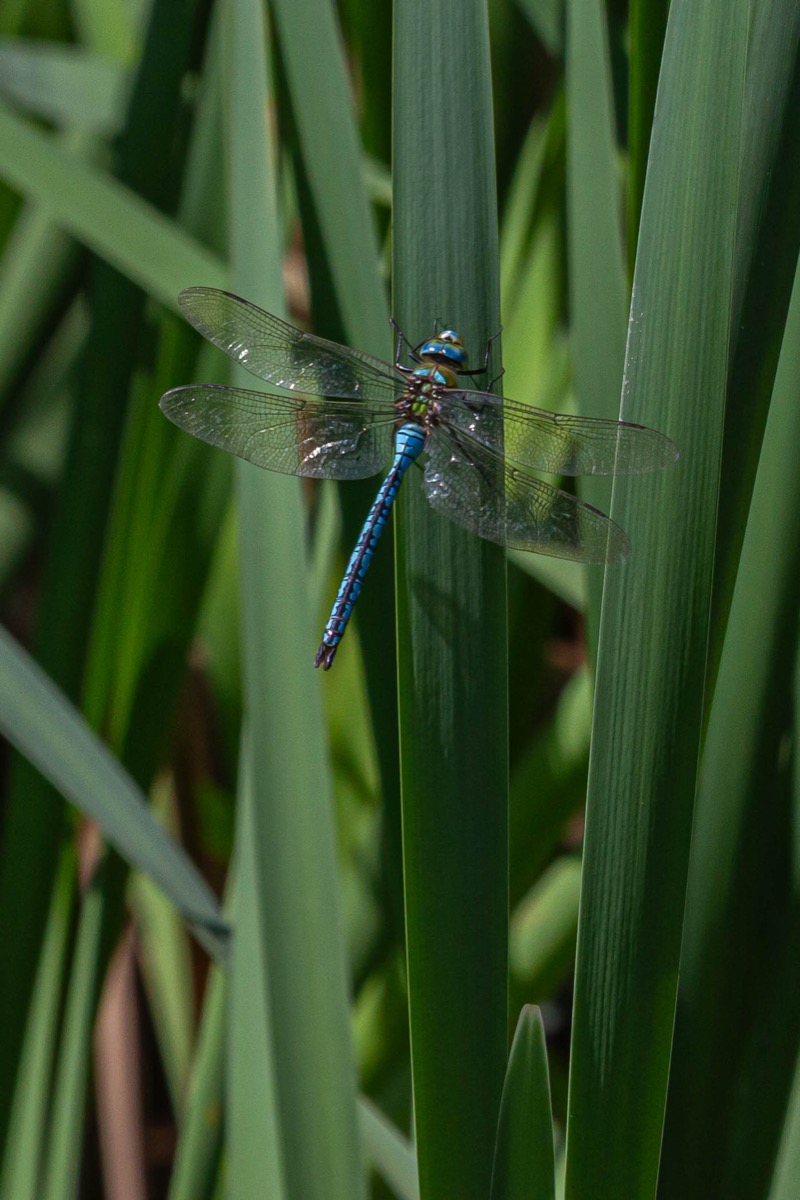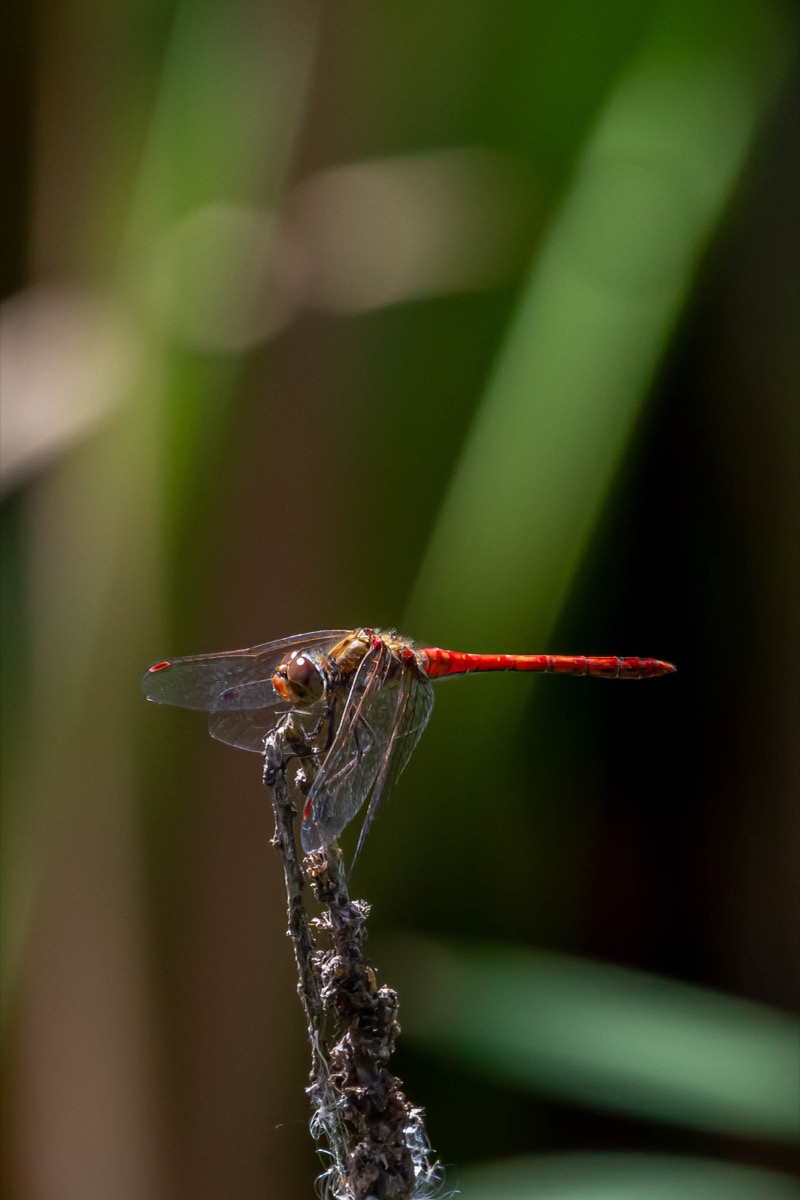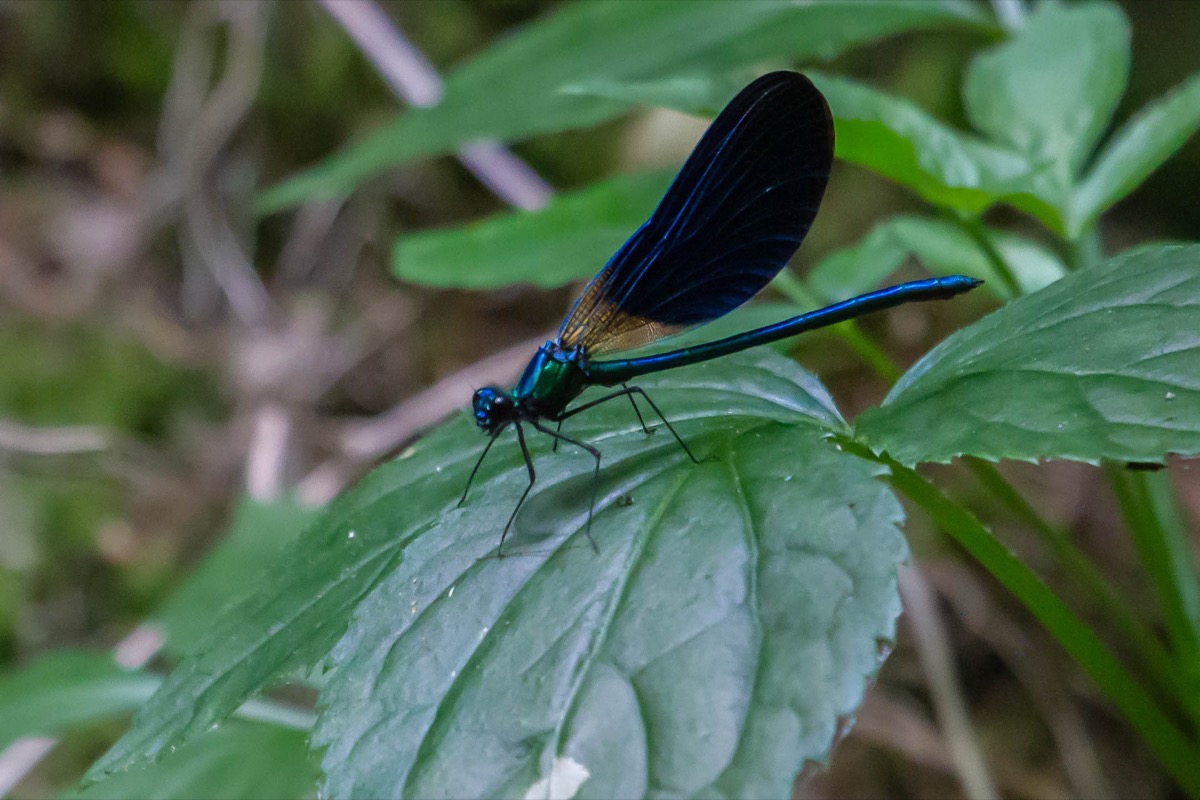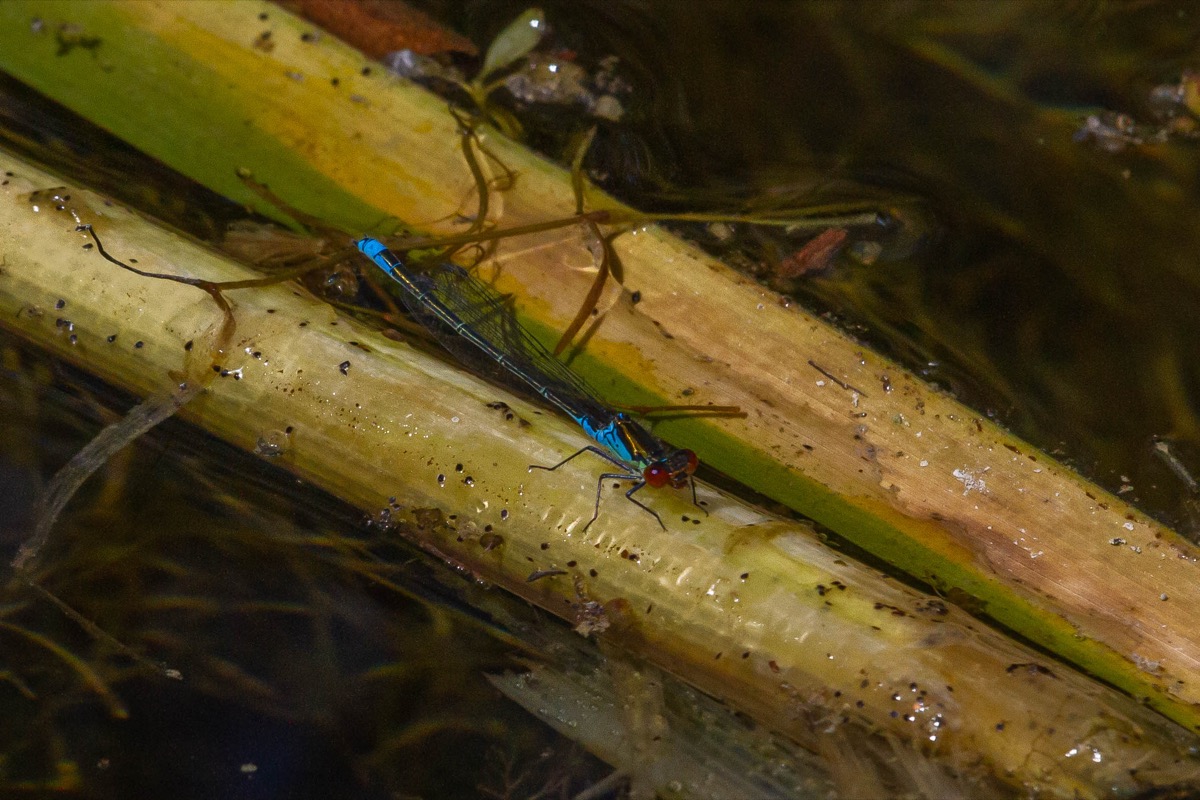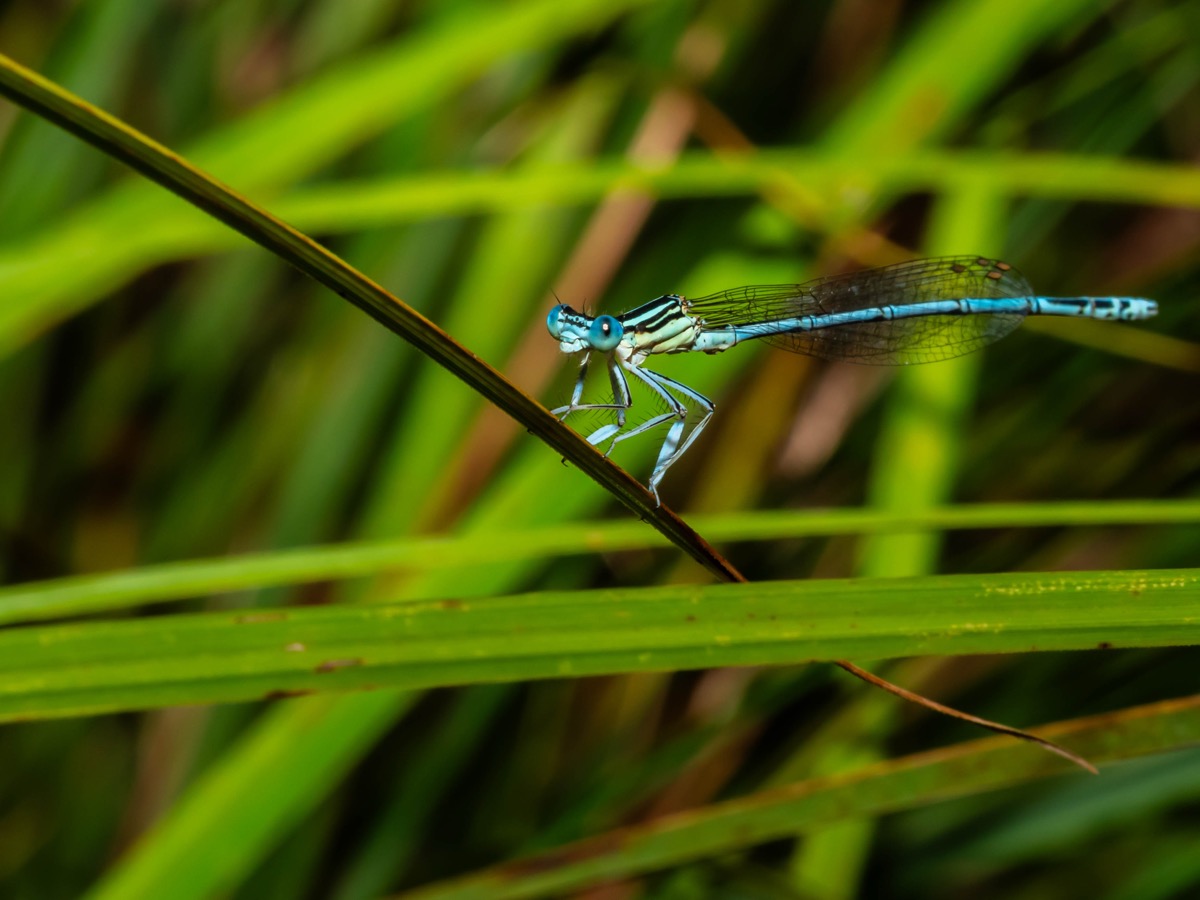Suborders
- Anisoptera – Dragonflies: robust, powerful flyers, wings spread at rest, eyes touching
- Zygoptera – Damselflies: slender, light flight, wings folded at rest, eyes separated
- (Sometimes Anisozygoptera, a fossil or transitional group in certain classifications)
Characteristics
- Two pairs of independent, often veined membranous wings
- Large, well-developed compound eyes (especially in Anisoptera)
- Elongated body, often brightly colored
- Chewing mouthparts (predators)
- Agile flight, sometimes hovering
Habitat
Odonates depend on aquatic environments for reproduction:
- Ponds, pools, rivers, ditches, bogs, lakes, canals
- Require aquatic or riparian vegetation for egg-laying
- Adults active in sunny areas near water
Biology
- Eggs laid in or near water, often on plants
- Aquatic larvae, predatory, equipped with a prehensile mask (modified labium)
- Incomplete metamorphosis (no pupal stage)
- Emergence on plant support, visible exuviae
- Larval stage lasts from a few months to several years depending on species
- Adults live for a few weeks to two months
Representative Families
Anisoptera
- Aeshnidae – Large, fast-flying dragonflies (Anax, Aeshna…)
- Libellulidae – Stocky and very common dragonflies (Libellula, Orthetrum, Sympetrum…)
- Gomphidae, Corduliidae
Zygoptera
- Coenagrionidae – Slender blue or green damselflies (Coenagrion, Ischnura…)
- Calopterygidae – Large metallic damselflies (Calopteryx…)
- Lestidae, Platycnemididae
Special Features
- Bioindicators of aquatic habitat quality
- Marked territorial behavior, especially in males
- Characteristic “heart” mating posture
- Some species exhibit migratory behavior
